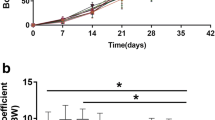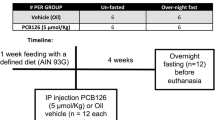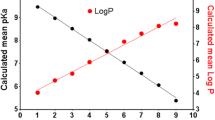Abstract.
The ability of the commercial polybrominated diphenyl ether (PBDE) preparation Bromkal 70-5 DE to alter thyroid hormone and vitamin A levels as well as microsomal enzyme activities was compared with that of the commercial polychlorinated biphenyl (PCB) preparation Aroclor 1254 in orally exposed female rats (Sprague-Dawley) and mice (C57BL/6 N). Additional mice were exposed to the PBDE congener 2,2',4,4'-tetrabromodiphenyl ether (DE-47), or to the PCB congener 2,3,3',4,4'-pentachlorobiphenyl (CB-105). For 14 days the animals were given approximately isomolar daily oral doses of Aroclor 1254, CB-105 (both 10 mg/kg body weight), Bromkal 70-5 DE or DE-47 (both at 18 mg/kg body weight). In addition, further groups of rats and mice received a higher dose of Bromkal 70-5 DE, 36 mg/kg body weight. Bromkal 70-5 DE and DE-47 decreased plasma free and total thyroxine (T4) levels in both rats and mice, although with lower potency than that of Aroclor 1254 and CB-105. By contrast, thyroid-stimulating hormone (TSH) levels were not significantly changed in any of the groups. Reduction of hepatic vitamin A levels was seen in rats after Aroclor 1254 and Bromkal 70-5 DE exposure. A similar tendency was seen also in mice, but the effects were significant only for concentration data and not the total amount. Induction of microsomal phase I enzymes, measured as ethoxy, methoxy and pentoxy resorufin O-dealkylase (EROD, MROD, PROD) activities, was greatest after exposure to Aroclor 1254/CB-105 but were also significant in the Bromkal 70-5 DE/DE-47-treated groups. However, induction of uridine diphosphoglucuronosyl transferase (UDPGT) was small and for most groups insignificant. In conclusion, the PBDE compounds studied, although having a lower potency than the PCB compounds, decreased thyroxine and vitamin A levels and induced microsomal enzyme activities. Rats were more sensitive to the observed effects than mice. Microsomal phase I activity might be related, directly or indirectly, to the T4 and vitamin A effects, whereas several factors (such as weak enzyme induction and lack of correlation with altered T4 and vitamin A levels) argue against any UDPGT-related effects.
Similar content being viewed by others
Author information
Authors and Affiliations
Additional information
Electronic Publication
Rights and permissions
About this article
Cite this article
Hallgren, S., Sinjari, T., Håkansson, H. et al. Effects of polybrominated diphenyl ethers (PBDEs) and polychlorinated biphenyls (PCBs) on thyroid hormone and vitamin A levels in rats and mice. Arch Toxicol 75, 200–208 (2001). https://doi.org/10.1007/s002040000208
Received:
Accepted:
Issue Date:
DOI: https://doi.org/10.1007/s002040000208




